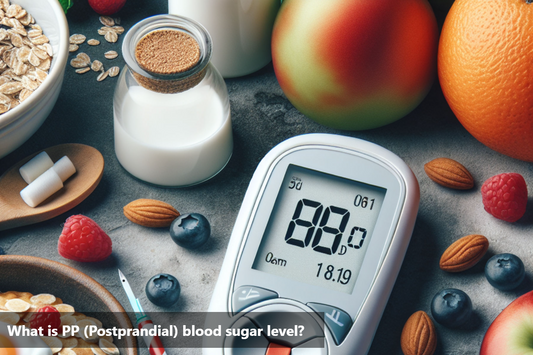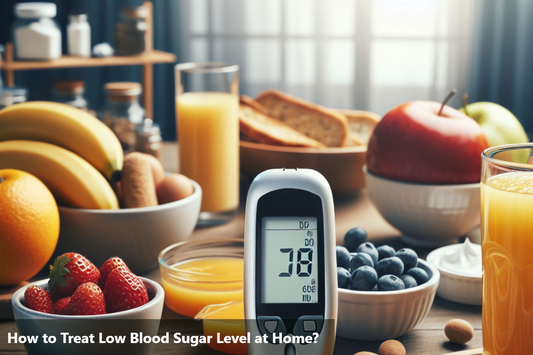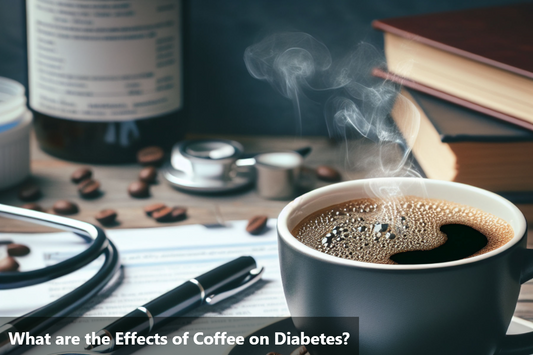The glycemic index (GI) is a scale that shows how different carbohydrates in food affect blood sugar levels. It tells us how quickly a food can make blood sugar go up. When we talk about potatoes, it's important to know their GI to make good choices about what to eat. Potatoes have different glycemic indexes depending on their type and how they're prepared. Regular potatoes have a higher GI than sweet potatoes because of their sugar and starch differences.
What is Glycemic Index?
The glycemic index (GI) is a numerical scale that ranks carbohydrates in foods based on how quickly and how much they raise blood sugar levels after consumption compared to pure glucose or white bread, which are assigned a value of 100. Foods with a high GI cause a rapid spike in blood sugar levels, while those with a low GI result in a slower, more gradual increase in blood sugar levels.
Here's how the glycemic index is typically classified:
-
Low GI (55 or less): These foods are digested and absorbed slowly, resulting in a gradual rise in blood sugar levels. Examples include most non-starchy vegetables, legumes, whole grains, nuts, and seeds.
-
Medium GI (56-69): Foods with a medium GI cause a moderate increase in blood sugar levels. Examples include some fruits, whole wheat products, and certain types of rice.
-
High GI (70 or above): These foods are rapidly digested and absorbed, leading to a quick spike in blood sugar levels. Examples include refined grains, sugary snacks, sweets, and processed foods
Glycemic Index of Potatoes
The glycemic index (GI) of potatoes can vary depending on factors such as the type of potato, cooking method, and preparation. Generally, the GI of potatoes falls within the medium to high range. Here are some approximate values for the glycemic index of different types of potatoes:
|
Type of Potato |
Glycemic Index (GI) Range |
|---|---|
|
Russet Potatoes |
78 - 111 |
|
Red Potatoes |
56 - 88 |
|
White Potatoes |
56 - 111 |
|
Sweet Potatoes |
44 - 94 |
It's important to note that the glycemic index of potatoes can vary based on factors such as cooking time, preparation method, ripeness, and individual differences in carbohydrate metabolism. Additionally, serving size and portion control play a significant role in determining the overall impact of potatoes on blood sugar levels.
Effect of Cooking Methods on Potato's Glycemic Index
The cooking method used can significantly influence the glycemic index (GI) of potatoes. Here's how different cooking methods affect the GI of potatoes:
-
Boiling:
-
Boiling potatoes typically results in a lower GI compared to other cooking methods. The starch in potatoes absorbs water during boiling, causing the potato cells to swell and the starch to gelatinize. This gelatinization process makes the starch less accessible to digestive enzymes, resulting in a slower release of glucose into the bloodstream.
-
Boiled potatoes generally have a moderate to low GI, depending on factors such as the type of potato and cooking time.
-
-
Baking/Roasting:
-
Baking or roasting potatoes at moderate temperatures can result in a moderate GI. The dry heat of the oven causes the surface of the potato to brown and caramelize, which can increase the GI slightly compared to boiling. However, the overall effect on blood sugar levels is still relatively moderate compared to frying.
-
Baked or roasted potatoes may have a slightly higher GI compared to boiled potatoes but are still considered acceptable choices for individuals concerned about blood sugar control.
-
-
Frying:
-
Frying potatoes, especially in oil or fat, can significantly increase the GI. The high temperature of frying causes the starch in potatoes to undergo rapid gelatinization, leading to a faster release of glucose into the bloodstream.
-
Fried potatoes, such as French fries or potato chips, typically have a high GI and can cause a rapid spike in blood sugar levels.
-
-
Mashing:
-
Mashed potatoes may have a higher GI compared to boiled potatoes due to the mechanical breakdown of the potato structure during mashing. However, the GI of mashed potatoes can vary depending on factors such as the type of potato, amount of added ingredients (such as butter or milk), and cooking method.
-
Overall, boiling or steaming potatoes is the preferred cooking method for minimizing their impact on blood sugar levels, as it results in a lower GI compared to frying or baking. Additionally, pairing potatoes with foods high in fiber, protein, and healthy fats can help further mitigate the glycemic response and promote better blood sugar control.
Conclusion
In conclusion, being aware of the glycemic index of different potato varieties is essential for controlling blood sugar levels. Substituting sweet potatoes for regular ones can help in stabilizing blood sugar levels and offering long-lasting energy. Additionally, preferring boiled potatoes over fried or baked options can contribute to better blood sugar management and improved well-being. Ultimately, making informed choices about potato consumption can positively impact overall health outcomes.
Struggling with low GI terminology? DiabeSmart Food Products are crafted for diabetics, clinically tested for efficacy, and taste great. Maintain your usual diet while managing your health effectively.
This Blog post is an initiative by DiabeSmart, to provide accurate and Nutritionist / Doctor approved information related to Diabetes. DiabeSmart is India's first Food brand designed specifically for Diabetics, that has been clinically tested on Diabetics and Pre-Diabetics to deliver 55% - 70% lower Sugar spikes. DiabeSmart is part of Lo! Foods - India's leading brand for Everyday Functional Health foods.















